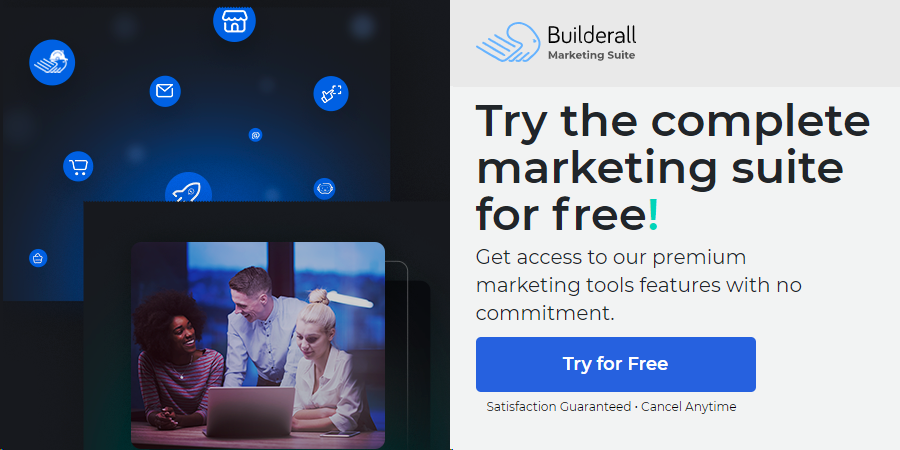
What strategies can a small business employ to compete with larger competitors in the local market? How can they distinguish themselves? How can they demonstrate the value of their products or services to potential customers?
Ways to Boost the Visibility of Your Small Business with Local SEO
1. Solve Website Technical Issues
If a website has technical issues, it is similar to a shop with a broken door. Without addressing these technical issues, nobody can access your content or enter the site. Your pages cannot be crawled and indexed by search engines, resulting in a lower ranking in search results. Hence, it is crucial to promptly identify and resolve these problems in order to enhance your local visibility.
In some instances, technical problems may go unnoticed until you notice a decline in your metrics. Issues such as slow website speeds, complex navigation, dysfunctional links, repeated content, and absence of alt tags need to be promptly addressed. To address these concerns, it is recommended to perform a technical SEO audit and evaluate the following aspects:
- Add an XML sitemap. This lists all the pages on your site to show how these are interrelated. Create a full sitemap using Google Search Console and submit this to Google.
- Identify plugins that prevent search engine crawling. Sometimes, plugins can block Google bots from crawling and indexing your site like the robots.txt plugin. Ask a web developer to check your site for this issue and correct these ASAP.
- Choose a unique domain name. Instead of www.wordpress.socalsurfers.com, buy a domain to configure your site to www.socalsurfers.com. Doing so tells Google that your site has valuable content for your target customers. Also, this simple change makes your business look and feel more professional.
- Look for accidental redirects. These issues can hinder Google’s access to your pages. A web developer can help you find and remove redirects to improve your site’s technical performance.
- Create a mobile-friendly site. Google has adopted mobile-first indexing, which prioritizes pages with mobile versions. With a mobile-friendly site that loads fast and has a responsive layout, you get better chances to rank well.
2. Produce Valuable Local Content
To demonstrate your comprehension of your customers’ needs and your ability to address their issues, consider sharing valuable content specific to their local community. Embrace the distinctiveness of each local area, whether it be a community, city, or town, through your content. This approach establishes your expertise within your industry and increases the likelihood of achieving a higher ranking on search engine results.
For the purpose of illustration, let’s consider a small surfboard store located in Southern California that has a website dedicated to sharing information about surfing in Newport Beach and Dana Point. The website primarily emphasizes the appropriate gear for enjoying the warm ocean waters, which includes essential surfboard upkeep specifically based on water temperature.
Here are a few strategies that are worth employing in order to enhance local authority through high-quality content.
- Use local landmarks and places as references. This shows your expertise and that your content is credible and relevant to their needs. A surfboard shop site would have content about a local beach surfing contest or a legendary surfer in the area.
- Include testimonials and reviews from local customers. One way to promote your small business is to include user-generated content like reviews and testimonials. Use short and direct reviews with specific details about your products or services. You can use text or videos to add to your social proof.
- Add relatable images and videos. Instead of adding generic visuals to your content, use images and videos your local market will appreciate. From our example, a photo or video of surfers slicing the wave using your brand of surfboard, wetsuit, leash, etc., would do.
- Structure your content well. Use headings and subheadings, bulleted points to emphasize your tips or ideas, and place your call-to-action (CTA) buttons on accessible areas of your page. Your company contact details should be on every page so customers can immediately place their orders or inquire.
- Utilize related local keywords. Use Google search results-related search terms to look for relevant local keywords. Using our example, the main keyword of the surfboard shop site is “SoCal surfboard store,” and relevant terms could be “San Diego surfboards,” “surfboard supplies Huntington Beach,” or “surfing supplies in Southern California.”
3. Use Local Backlinking Tactics
Google recognizes the value of ranking your local business based on the links it receives. Backlinks, which are links acquired from other websites directing to your site, serve as evidence of your credibility as an information source and can influence your position in search results.
To improve your site’s ranking on search engine results pages (SERPs), it is important to focus on acquiring backlinks from reputable, top-ranking domains. The quality of these links holds more significance than the quantity, as having excessive backlinks can increase the chances of obtaining links from untrustworthy websites that could have a detrimental effect on your SEO. In general, it is advisable to devise a plan that aims at generating links from moderately influential sites. The following suggestions can assist you in achieving this goal.
- List your business on local directories. Locate general directory sites and listings for specific industries. For example, a surfboard shop should be on Yelp, Yellow Pages, Time Out, and Bing Places. More specific directories include Surf City USA and Noosa Surfing Directory.
- Offer guest posts on relevant blogs. Contact relevant blogs and sites in your industry and tell them you are willing to write content for them for a backlink.
- Be a sponsor for events. Local events bring customers and businesses together; this is your chance to show your expertise and get natural backlinks. Sponsor a surfing competition, for example, and you will have your business name and page link in the event or contest’s press releases and other media-generated posts.
Begin by performing a local SEO audit.
By performing a local SEO audit on your website, you will gain insights into the strengths and weaknesses of your website. This includes an evaluation of how your website is functioning, areas where it is lacking, and identifying areas for improvement.
During a local audit, you should conduct a series of steps, including checking your business’s GMB profile, examining any Google penalties, assessing keyword targeting, searching for duplicated pages, and evaluating the credibility of your landing pages, backlinks, engagement, and customer reviews.
- Analyze Your Current Online Presence
In order to optimize your small business for local SEO, it is important to carefully evaluate your current online presence. This involves conducting a thorough examination of your website and social media profiles on various platforms. During this evaluation, you should assess elements such as the design, content, keywords, and metadata of your website.
- Assess Your Competitors
In order to stay ahead of your competition due to the intense competition everywhere, it is important to conduct a competitive analysis and assess how your business compares to competitors in your local market.
- Identify Your Local Keywords
Targeting local keywords is one of the top-ranking factors for local SEO in 2023. The key is to choose local keywords that align with your company’s offerings and location. It is important to avoid keyword stuffing and instead focus on developing content that seamlessly incorporates these local keywords. Failure to do so may result in penalties from Google, negatively impacting your local SEO efforts.
5. Enhance the efficiency of your GMB Profile (Google My Business Profile).
If you want to enhance your local SEO, it is important to ensure that your Google My Business (GMB) listing aligns with digital marketing best practices. Treating your GMB listing as you would any other social media profile and regularly updating it is crucial for small businesses targeting a local market.
If most people view their listing as a fixed directory page, maintaining an updated listing will allow you to differentiate yourself. The following suggestions can provide inspiration:
- Claim your Google listing.
- Optimize your business information and maintain consistent NAP [Name, Address, Phone#] on your GMB listing that matches the one on your website.
- Include your company’s description and category.
- Upload at least 3 to 5 high-quality images for your company.
- Add reviews from your previous customers.
- Update your working and availability hours.
- Add special features to your business to draw attention.
- Make Sure Your Business is Verified on Google:
Once your business is verified on Google, it will appear as an authorized listing both in Google Maps and Google search results. This verification process serves to validate the authenticity of your business and its physical presence, thereby fostering trust among customers seeking products or services similar to yours.
Utilize social media platforms to enhance local SEO.
You can utilize social media platforms like Facebook, Twitter, and Instagram to create business profiles and share content with local audiences. By consistently posting relevant and engaging content for local SEO, you can establish a loyal following and enhance your likelihood of appearing in local search results.
By engaging with customers and gathering feedback, you can also share your business’s location and contact details, enhance your visibility in local search results, and boost the chances of potential customers reaching out or visiting your establishment. Ultimately, this local SEO strategy aims to raise your social media conversion rate, which is the ultimate objective.
- Optimize Your Social Media Profiles:
In order to enhance your business’s visibility in local search results, it is important to optimize your social media profiles by following specific measures to establish and improve your social media accounts.
- Post-Engaging Content on All Platforms:
To effectively utilize social media platforms for local SEO, it is crucial to establish a consistent brand voice and share relevant and engaging content with your targeted local audience. By following this approach, you can enhance your visibility in local search results and attract a larger number of local customers to your small business.
7. Keep track of and evaluate the results of your efforts in local SEO.
It is vital to monitor and measure your local SEO endeavors to confirm the effectiveness and outcomes of your local SEO plan. To handle and track your business listings on different online directories and search engines, you can utilize local SEO tools such as Ahrefs, Moz Local, SEMRush, technical SEO, or Yext.
Here are a few additional methods to monitor and assess the growth of your local SEO efforts, and ensure that you are achieving your local SEO goals, which involve regularly monitoring and measuring your performance, identifying areas that require improvement, and making necessary adjustments to your strategy as you track your progress over time.
- Use Google Analytics to track your website traffic.
- Track your GMB Profile with Google My Business Insights
- Track your website’s traffic, search rankings, and user behavior with Google Search Console.
Side notes
If you don’t see any results after following this local SEO guide, it’s important to remember that consistency is crucial for success. Rather than getting discouraged, it is recommended to wait at least one month, or even better, two months, before reassessing your SEO strategy.
In an ideal scenario, it typically takes approximately three months for any SEO strategy to make a noticeable difference. Although implementing a local SEO strategy requires both time and effort, the advantages it offers, such as enhanced visibility and targeted traffic, can significantly influence your overall profitability.





